As our car bobbed down the cobblestone streets of Antigua, I got my first glimpses of the small but vibrant city. I’ve been to many Spanish colonial towns, but Antigua’s architecture immediately struck me as unique. Having travelled 1200-km across the country by road, from the borders with Belize to Honduras and beyond, it was by far the grandest and most gorgeous architecture in Guatemala that I had witnessed thus far. Both the functional buildings and scattered ruins in Antigua, Guatemala seemed to be telling a story that I needed to hear. Here’s some of the fascinating things I learnt and how to experience the outstanding urban landscape of Antigua yourself.
Disclosure: I may earn compensation from the purchase of any product or service linked on this website, at no extra cost to you. I only link to products I use and love, therefore feel comfortable recommending.
A brief history of La Antigua Guatemala
Establishing a colonial capital
Antigua stands today despite Mother Earth’s best efforts. Volcanoes, mudslides and especially earthquakes, have challenged the city. Founded in the Valley of Panchoy in 1543 as Santiago de Guatemala, the new city was to be the seat of Spanish colonial power in the New World. Having already failed two attempts to establish a capital that could survive an onslaught of natural disasters, Santiago de Guatemala lasted a good two centuries.
Then came the Santa Marta earthquakes of 1773. The Spanish finally threw in the towel and created Guatemala City. This left la Antigua Guatemala, meaning “Old Guatemala City” relatively abandoned. The population dropped to 9000, mostly indigenous, residents.



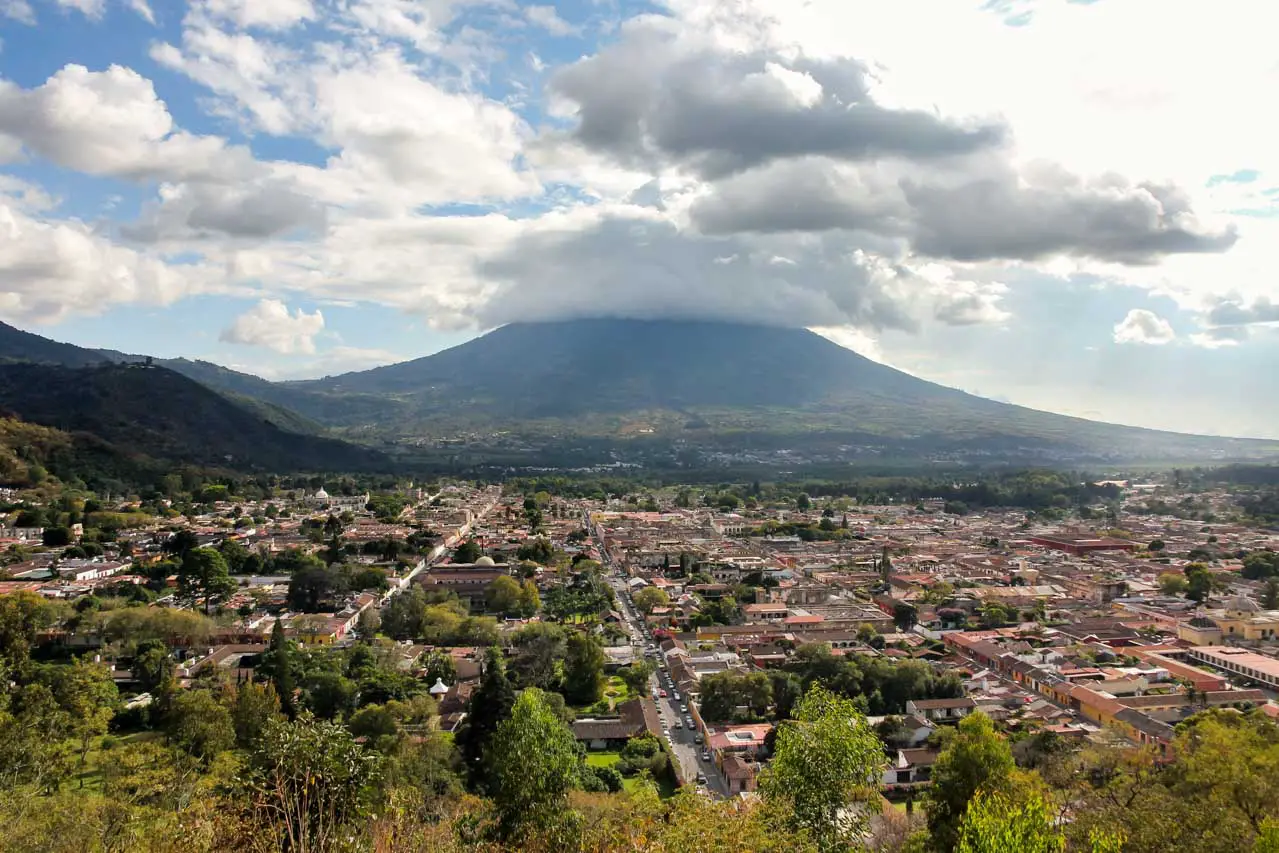
Crumbling Antigua through the lens of a prince
Prince Wilhelm of Sweden visited Antigua, Guatemala in April 1920, which was no mean feat due to the terrible condition of the roads. He described the state of Antigua in his book Between Two Continents:
“Compared to Guatemala City at the time, Antigua was quite nicely kept, although all the churches were equally dilapidated and left entirely to themselves, as rebuilding since 1773 was confined to the strictly necessary. For the most part, only blank walls and shattered domes remained to greet the visitor by 1920, and some of the churches were in pitiful conditions. In Santa Clara, for example, a mule was grazing, and in the Church of Grace a native family had taken up its quarters, along with their varied collection of domestic animals.”
Revival
Antigua started to regain prominence through a boom in coffee production. Some of the colonial buildings were being renovated, and in some cases, partially rebuilt. Finally, in 1944 the town caught the government’s attention and it was declared a National Monument.
Restoration efforts were all but undone by another major earthquake in 1976. The city, picked itself up, dusted itself off and started all over again and in 1979 it was World Heritage Listed by UNESCO. This recognition would guide and fuel further restoration efforts and Antigua remains a living museum of colonial architecture.
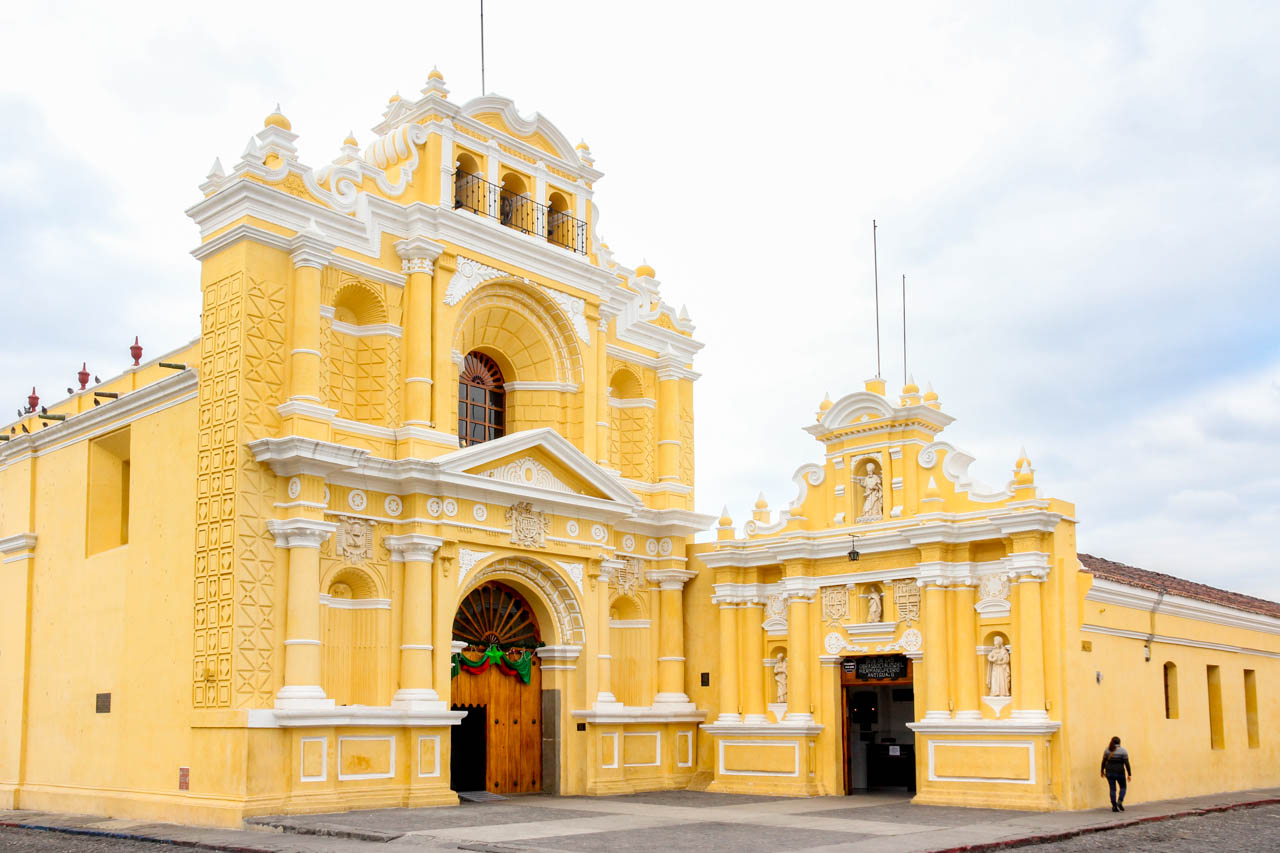
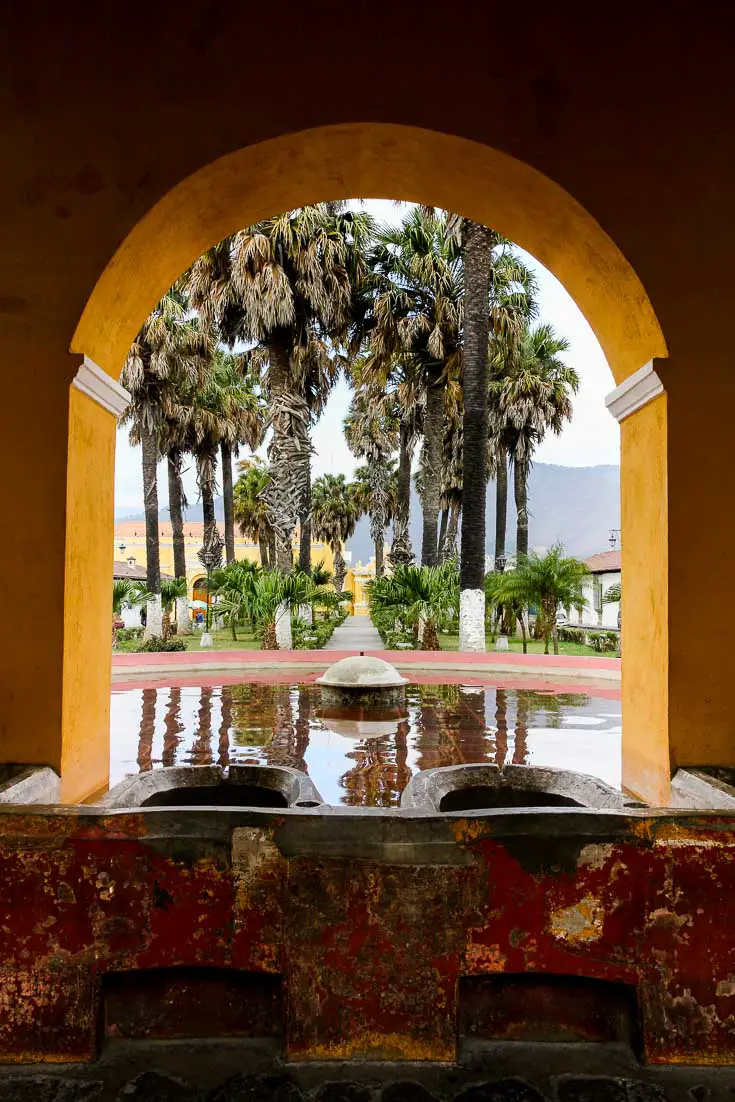
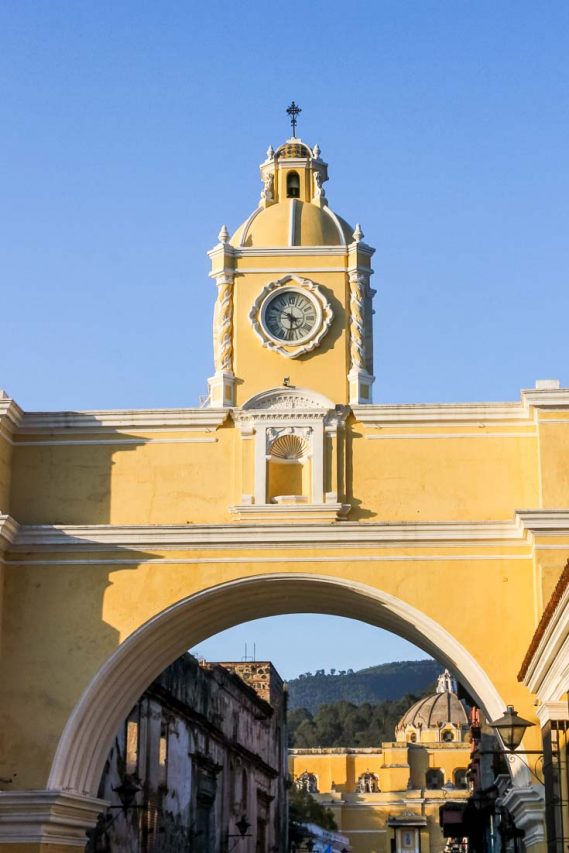
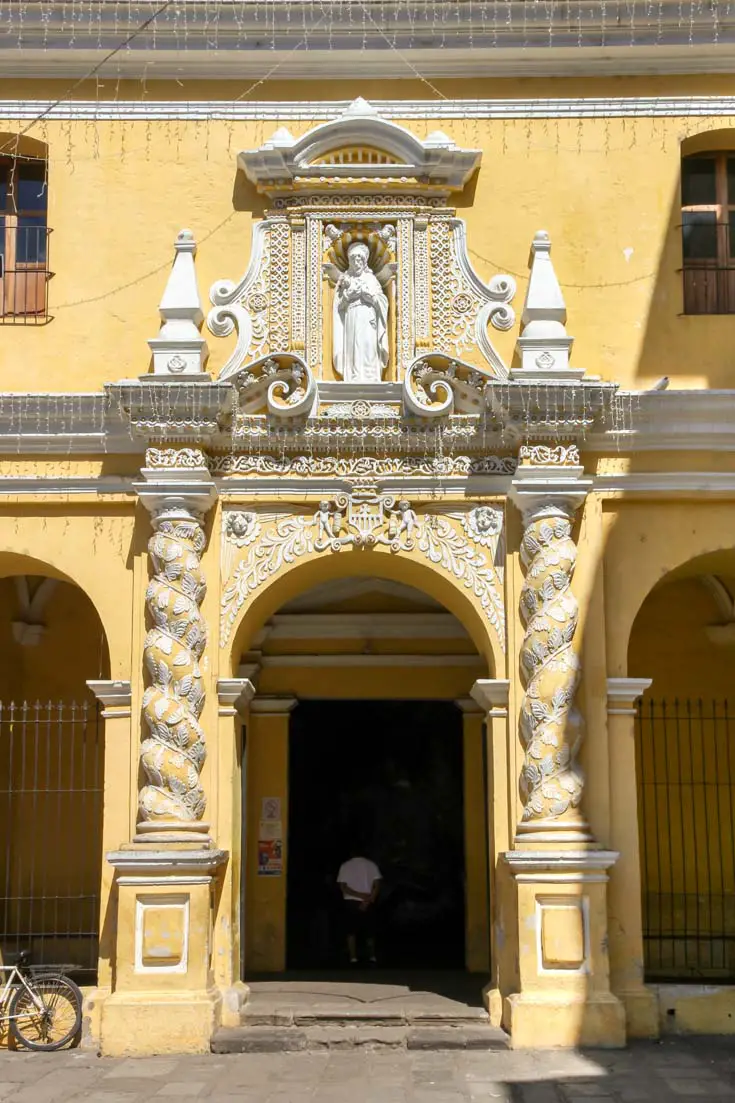
Renaissance town planning
In the 200-years Antigua was being developed as the would-be capital, great planning, design and craftsmanship were poured into making it an outstandingly beautiful city. Antigua is laid out in an Italian Renaissance-inspired grid of north-south and east-west streets.
Though the colonial buildings that make up Antigua today are largely from the 17th– and 18th-centuries, the 16th-century layout remains. Other 16th-century survivors include the cobblestone streets and plazas, many featuring fountains. Fountains were historically as important for water distribution, as they were for decorative purposes.
Earthquake baroque architecture style
Guatemala sits on what is called the Pacific Rim of Fire, where tectonic plates meet, producing exaggerated volcanic and seismic activity. The architectural style of colonial Antigua is specifically called barroco antigueño, an adaptation of Baroque which was trendy in Europe at the time. The traditional Baroque style was uniquely tailored to weather earthquakes with single-story buildings, fortress-thick walls, and low bell towers.
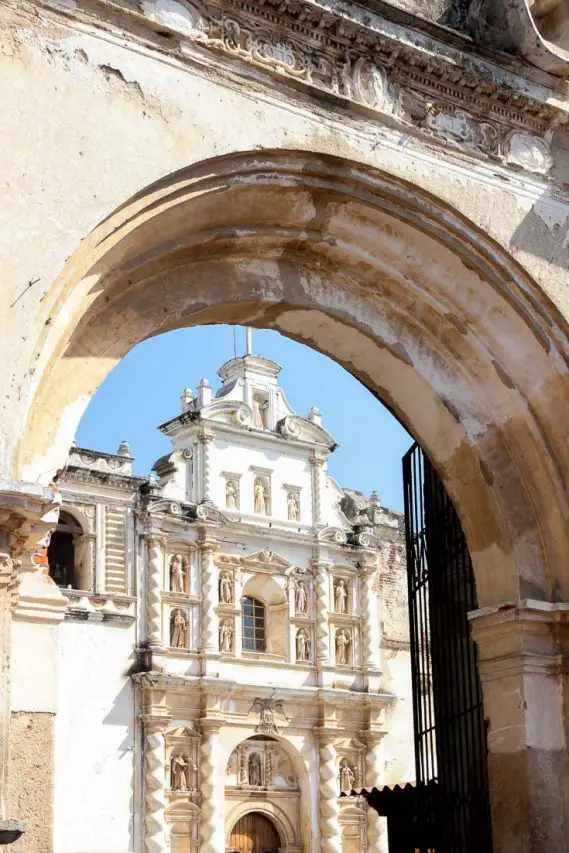

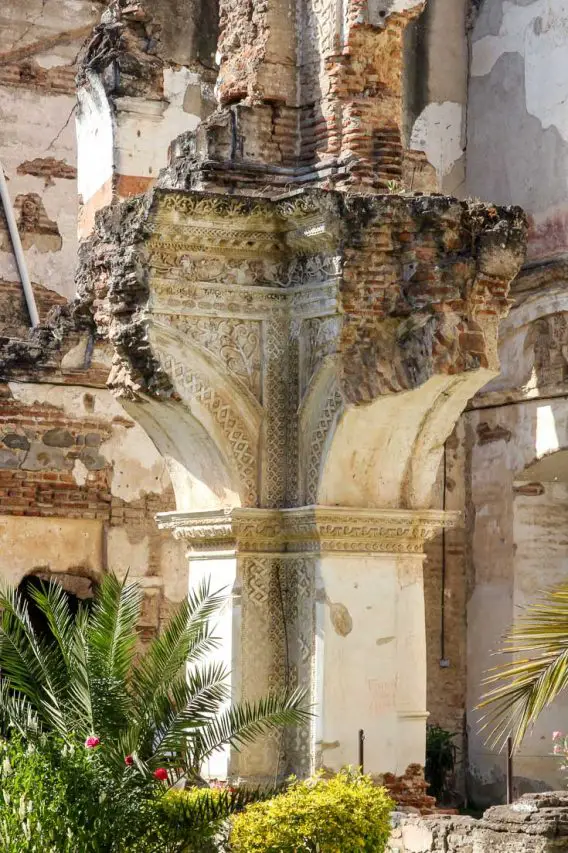


Antigua’s architectural details
Many characteristics borrowed from Spanish Baroque can be seen in Antigua. These include churrigueresque (busy, totally OTT, stucco decoration); squiggly column shapes (aka solomonic columns); and cupolas to let light in and smoke out. Mansions and private residences often have tiled window sills, stone door frames and Mudéjar-style polygonal windows.
As you’d expect from a Spanish colonial town, there are plenty of more general Mediterranean references in the architecture too. Leafy courtyards shielded by thick outer walls and fabulous hardware including door knockers abound. Low pitch roofs of terracotta tiles and wooden window grills are all commonplace. Not to mention enormous doors tall enough for a nobleman on horseback and wide enough for a carriage, with smaller human-sized doors cut within. Note, there aren’t many genuine colonial-era doors left in Antigua, they are generally reproductions.
Antigua’s colours
Today, a restored Antigua is awash with colour inspired by historical hues. The National Council for the Conservation of Antigua Guatemala (CNPAG) regulates the rainbow of possibilities, with a list of official options. These are based on archaeological studies of lime-based paints that date back to colonial times. The palette includes sky blue, rust, mahogany, ochre, white and yellows in mustard and maize.




Best architecture and ruins in Antigua
There are many beautiful and significant buildings to explore in Antigua, just wander around and see what you can discover. Some particularly noteworthy examples are:
- The Palace of the Captains General
- San Jose Cathedral
- University of San Carlos (now the Museum of Colonial Art)
- Antigua Cathedral
- San Francisco the Great Sanctuary
- San Juan de Dios Convent and Hospital
- Union Water Tank
There are also partial ruins of churches and monasteries open to the public for free or a small fee. Depending on the amount of time you have in Antigua and your level of interest in history and architecture, I suggest you explore at least two of these beautiful ruin sites:
- Antigua Cathedral and crypt (rear of current cathedral)
- San Francisco the Great Sanctuary (convent at rear)
- Santo Domingo Monastery
- La Merced and the old San Franciscan convent
- El Carmen
- Antiguo Colegio de la Compañia de Jesús (salvaged façade free to view and visible from the street)
- La Recoleccion (behind the central market)
- Santa Clara
- Church of Santa Rosa
- Ermita de la Santa Cruz
- Capuchins Church and Monastery
- The ruins are often tucked behind the facades of working churches, so if you don’t know where you’re going you could miss them altogether. This mystery and seclusion makes them all the better, as lesser-researched tourists pass right on by, leaving the ethereal beauties to the few who will truly appreciate them.
If you have an opportunity to see the architecture and ruins in Antigua, Guatemala, embrace it whole-heartedly. Antigua’s architectural cred punches far above the average city of its size, especially one plagued by natural disaster. Not to mention all the other inspiring experiences to do and see around the city.
Peace, love & inspiring travel,
Madam ZoZo

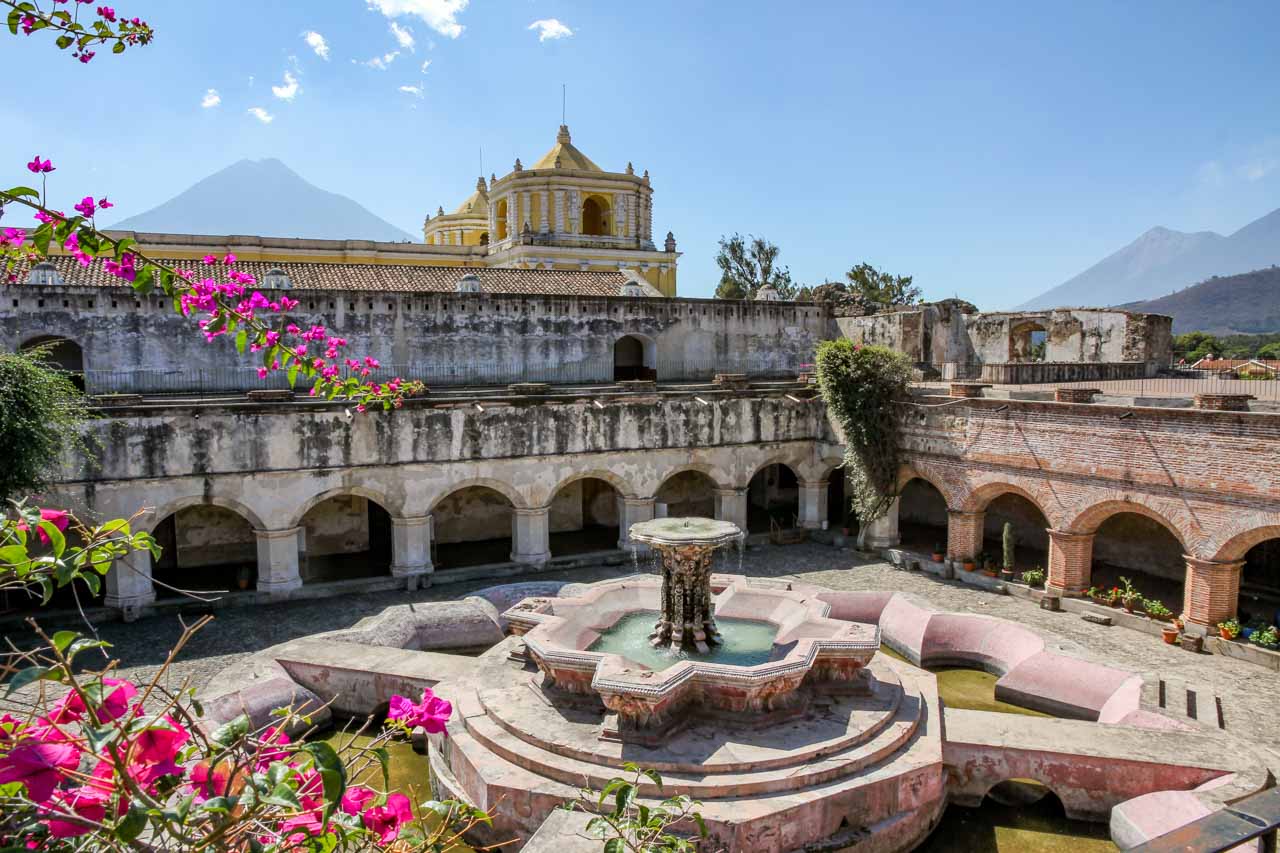
2 comments
These pictures are amazing! I had no idea that Guatemala had ruins like these! I would love to visit them and learn more about this beautiful place.
I didn’t either until I got there! I hope you get to check them out in person one day